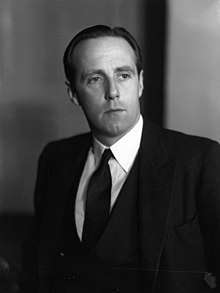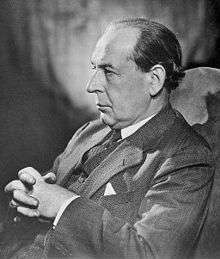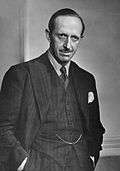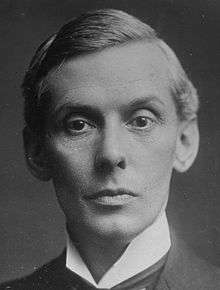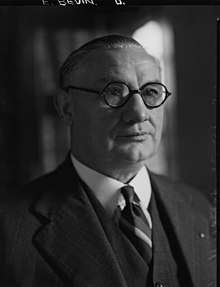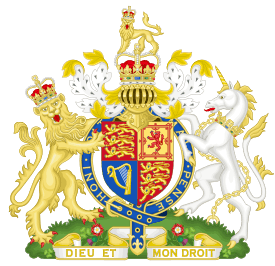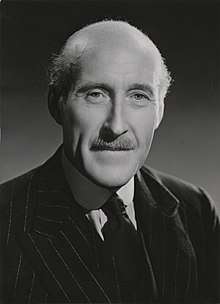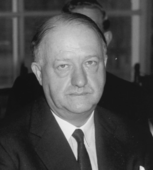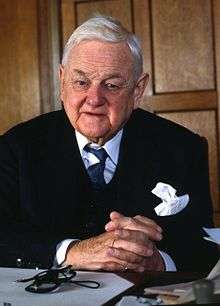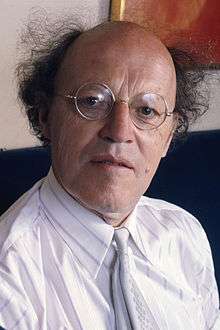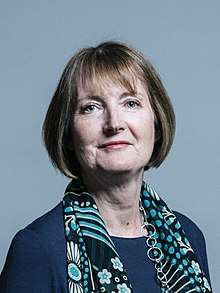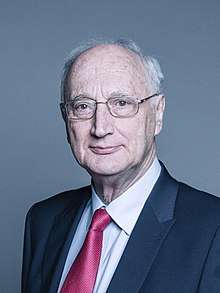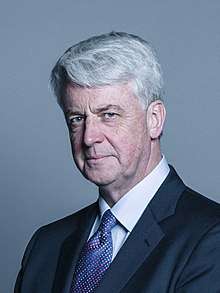Lord Privy Seal
The Lord Privy Seal (or, more formally, the Lord Keeper of the Privy Seal) is the fifth of the Great Officers of State in the United Kingdom, ranking beneath the Lord President of the Council and above the Lord Great Chamberlain. Originally, its holder was responsible for the monarch's personal (privy) seal (as opposed to the Great Seal of the Realm, which is in the care of the Lord Chancellor) until the use of such a seal became obsolete. The office is currently one of the traditional sinecure offices of state or may be referred Minister without Portfolio. Today, the holder of the office is invariably given a seat in the Cabinet of the United Kingdom.
| Lord Keeper of the Privy Seal | |
|---|---|
.svg.png) | |
| Style | The Right Honourable |
| Appointer | The Sovereign on the advice of the prime minister |
| Inaugural holder | William Melton |
| Formation | 1307 |
Though one of the oldest offices in European governments, it has no particular function today because the use of a privy seal has been obsolete for centuries; thus the office has generally been used as a kind of minister without portfolio. Since the premiership of Clement Attlee, the position of Lord Privy Seal has frequently been combined with that of Leader of the House of Lords or Leader of the House of Commons. The office of Lord Privy Seal, unlike those of Leader of the Lords or Commons, is eligible for a ministerial salary under the Ministerial and other Salaries Act 1975.[1] The office does not confer membership of the House of Lords, leading to Ernest Bevin's remark on holding this office that he was "neither a Lord, nor a Privy, nor a Seal".[2]
During the reign of Edward I, prior to 1307, the Privy Seal was kept by the Controller of the Wardrobe.[3] The Lord Privy Seal was the president of the Court of Requests during its existence.
List of Lord Keepers of the Privy Seal
Lord Keepers of the Privy Seal (c. 1307–1714)
| Name (Birth–Death) |
Term of office | Monarch (Reign) | |
|---|---|---|---|
| William Melton (died 1340) |
1307 | 1312 | Edward II.svg.png) (1307–1327) |
| Roger Northburgh (died 1358) |
1312 | 1316 | |
| Thomas Charlton (died 1344) |
1316 | 1320 | |
| Robert Baldock Archdeacon of Middlesex (died 1327) |
1320 | 1323 | |
| Robert Wodehouse (died 1346) |
1323 | 1323 | |
| Robert Ayleston | 1323 | 1324 | |
| William Ayermin (died 1336) |
1324 | 1325 | |
| Henry de Cliff (died 1334) |
1325 | 1325 | |
| William Herlaston | 1325 | 1326 | |
| Robert Wyvil (died 1375) |
1326 | 1327 | |
| Richard Airmyn (died c. 1340) |
1327 | 1328 | Edward III_(Attributed).svg.png) (1327–1377) |
| Adam Lymbergh | 1328 | 1329 | |
| Richard Bury Bishop of Durham (1287–1345) |
1329 | 1334 | |
| Robert Ayleston | 1334 | 1334 | |
| Robert Tawton | 1334 | 1335 | |
| William de la Zouch (died 1352) |
1335 | 1337 | |
| Richard Bintworth (died 1339) |
1337 | 1338 | |
| William Kilsby | 1338 | 1342 | |
| John de Ufford (died 1349) |
1342 | 1344 | |
| Thomas Hatfield (died 1381) |
1344 | 1345 | |
| John Thoresby Master of the Rolls (died 1473) |
1345 | 1347 | |
| Simon Islip Archbishop of Canterbury (died 1366) |
1347 | 1350 | |
| Michael Northburgh Archdeacon of Suffolk (died 1361) |
1350 | 1354 | |
| Thomas Bramber | 1354 | 1355 | |
| John Winwick | 1355 | 1360 | |
| John Buckingham Bishop of Lincoln (died 1399) |
1360 | 1363 | |
| William of Wykeham Archdeacon of Lincoln (died 1358) |
1363 | 1367 | |
| Peter Lacy (c. 1310/8–1375) |
1367 | 1371 | |
| Nicholas Carew MP for Surrey (died 1390) |
1371 | 1377 | |
| John Fordham (died 1425) |
1377 | 1381 | Richard II.svg.png) (1377–1399) |
| William Dighton | 1381 | 1382 | |
| Walter Skirclaw Bishop of Coventry and Lichfield (died 1406) |
1382 | 1386 | |
| John Waltham Bishop of Salisbury (died 1395) |
1386 | 1389 | |
| Edmund Stafford Bishop of Exeter (1344–1419) |
1389 | 1396 | |
| Guy Mone (died 1407) |
1396 | 1397 | |
| Richard Clifford Bishop of Bath and Wells (died 1421) |
1397 | 1401 | |
Henry IV.svg.png) (1399–1413) | |||
| Thomas Langley (c. 1363–1437) |
1401 | 1405 | |
| Nicholas Bubwith (1355–1424) |
1405 | 1406 | |
| John Prophet Dean of York (1356–1416) |
1406 | 1415 | |
Henry V.svg.png) (1413–1422) | |||
| John Wakering Bishop of Norwich (died 1425) |
1415 | 1416 | |
| Henry Ware (died 1420) |
1416 | 1418 | |
| John Kemp Bishop of Rochester (c. 1380–1454) |
1418 | 1421 | |
| John Stafford (died 1452) |
1421 | 1422 | |
| William Alnwick Bishop of Norwich [nb 1] (died 1449) |
1422 | 1432 | Henry VI.svg.png) (1422–1461) |
| William Lyndwood Bishop of St David's [nb 2] (c. 1375–1446) |
1432 | 1443 | |
| Thomas Beckington Bishop of Bath and Wells (c. 1390–1465) |
1443 | 1444 | |
| Adam Moleyns Bishop of Chichester [nb 3] (died 1450) |
1444 | 1450 | |
| Andrew Holes Archdeacon of York |
1450 | 1452 | |
| Thomas Lisieux Dean of St Paul's (died 1456) |
1452 | 1456 | |
| Laurence Booth Bishop of Durham [nb 4] (c. 1420–1480) |
1456 | 1460 | |
| Robert Stillington Bishop of Bath and Wells [nb 5] (1420–1491) |
1460 | 1467 | |
Edward IV.svg.png) (1461–1470) | |||
| Thomas Rotheram Bishop of Rochester [nb 6] (1423–1500) |
1467 | 1470 | |
| John Hales Bishop of Coventry and Lichfield (c. 1400–1490) |
1470 | 1471 | Henry VI.svg.png) (1470–1471) |
| Thomas Rotheram Bishop of Lincoln [nb 7] (1423–1500) |
1471 | 1474 | Edward IV.svg.png) (1471–1483) |
| John Russell Bishop of Lincoln [nb 8] (died 1494) |
1474 | 1483 | |
Edward V.svg.png) (1483) | |||
| John Gunthorpe Dean of Wells (died 1498) |
1483 | 1485 | |
Richard III.svg.png) (1483–1485) | |||
| Peter Courtenay Bishop of Exeter (c. 1432–1492) |
1485 | 1487 | Henry VII.svg.png) (1485–1509) |
| Richard Foxe Bishop of Winchester [nb 9] (c. 1448–1528) |
1487 | 1516 | |
Henry VIII.svg.png) (1509–1547) | |||
| Thomas Ruthall Bishop of Durham (died 1523) |
1516 | 1523 | |
| Henry Marney 1st Baron Marney (c. 1447–1523) |
1523 | 1523 | |
| Cuthbert Tunstall Bishop of London (1474–1559) |
1523 | 1530 | |
| Thomas Boleyn 1st Earl of Wiltshire (c. 1477–1539) |
1530 | 1536 | |
| Thomas Cromwell 1st Earl of Essex [nb 10] (c. 1485–1540) |
1536 | 1540 | |
| William FitzWilliam 1st Earl of Southampton (c. 1490–1542) |
1540 | 1542 | |
| John Russell 1st Earl of Bedford [nb 11] (c. 1485–1555) |
1542 | 1555 | |
Edward VI.svg.png) (1547–1553) | |||
Mary I.svg.png) (1553–1558) | |||
| William Paget 1st Baron Paget (c. 1506–1563) |
1555 | 1558 | |
| Sir Nicholas Bacon (1510–1579) |
1558 | 1571 | Elizabeth I.svg.png) (1558–1603) |
| William Cecil 1st Baron Burghley (1520–1598) |
1571 | 1572 | |
| William Howard 1st Baron Howard of Effingham (c. 1510–1573) |
1572 | 1573 | |
| Sir Thomas Smith MP for Essex (1513–1577) |
1573 | 1576 | |
| Sir Francis Walsingham MP for Surry (c. 1532–1590) |
1576 | 1590 | |
| William Cecil 1st Baron Burghley (1520–1598) |
1590 | 1598 | |
| Robert Cecil 1st Earl of Salisbury (1564/3–1598) |
1598 | 1608 | |
James I.svg.png) (1603–1625) | |||
| Henry Howard 1st Earl of Northampton (1540–1614) |
1608 | 1614 | |
| Robert Carr 1st Earl of Somerset (c. 1587–1646) |
1614 | 1616 | |
| Edward Somerset 4th Earl of Worcester (c. 1550–1628) |
1616 | 1625 | |
| Sir John Coke MP for Cambridge University (1563–1644) |
1625 | 1628 | Charles I.svg.png) (1625–1649) |
| Sir Robert Naunton (1563–1635) |
1628 | 1628 | |
| Henry Montagu 1st Earl of Manchester (1563–1635) |
1628 | 1642 | |
| Lucius Cary 2nd Viscount Falkland (c. 1610–1643) |
1643 | 1643 | |
| Sir Edward Nicholas [nb 12] (1593–1669) |
1643 | 1644 | |
| Henry Bourchier 5th Earl of Bath (1587–1654) |
1644 | 1646 [nb 13] | |
| Interregnum Commissioners of Parliament's Great Seal |
1646 | 1660 | Charles II.svg.png) Court in exile |
| John Robartes 2nd Baron Robartes (1606–1685) |
1660 | 1673 | Charles II.svg.png) (1660–1685) |
| Arthur Annesley 1st Earl of Anglesey (1614–1686) |
1673 | 1682 | |
| George Savile 1st Marquess of Halifax (1633–1695) |
1682 | 1685 | |
| Henry Hyde 2nd Earl of Clarendon (1638–1709) |
1685 | 1687 | James II.svg.png) (1685–1688) |
| Henry Arundell 3rd Baron Arundell of Wardour (1607/8–1694) |
1687 | 1688 | |
| George Savile 1st Marquess of Halifax (1633–1695) |
1689 | 1690 | Mary II.svg.png) (1689–1694) & William III .svg.png) (1689–1702) |
| Thomas Herbert 8th Earl of Pembroke (c. 1656–1733) |
1692 | 1699 | |
| John Lowther 1st Viscount Lonsdale (1655–1700) |
1699 | 1700 | |
| Ford Grey 1st Earl of Tankerville (1655–1701) |
1700 | 1701 | |
| John Sheffield 1st Duke of Buckingham and Normanby[nb 14] (1648–1721) |
1702 | 1705 | Anne.svg.png) (1702–1714) |
| John Holles 1st Duke of Newcastle-upon-Tyne (1662–1711) |
1705 | 1711 | |
| John Robinson Bishop of Bristol (1650–1723) |
1711 | 1713 | |
| William Legge 1st Earl of Dartmouth (1672–1750) |
1713 | 1714 | |
Lord Keepers of the Privy Seal (1714–present)
- Notes
- Archdeacon of Sarum until 1426; Bishop of Norwich from 1426
- Archdeacon of Oxford 1434–1442; Bishop of St David's from 1442
- Dean of Salisbury until 1446; Bishop of Chichester from 1446
- Dean of St Paul's until 1457
- Archdeacon of Taunton until 1465; Bishop of Bath and Wells from 1466
- Bishop of Rochester from 1468
- Bishop of Rochester until 1472; Bishop of Lincoln from 1472
- Bishop of Rochester 1476–1480; Bishop of Lincoln from 1480
- Bishop of Exeter until 1492; Bishop of Bath and Wells 1492–1494; Bishop of Durham 1494–1501; Bishop of Winchester from 1501
- Concurrently held the offices of Chancellor of the Exchequer from 1533, Secretary of State from 1534, and Lord Great Chamberlain in 1540
- Baron Russell from 1539, created Earl of Bedford in 1551
- Concurrently held the office of Secretary of State
- Appointed in the controversial Oxford Parliament, Bourchier is sometimes regarded as holding the office for life. However, during the Interregnum Bourchier was identified as a Delinquent by Parliamentarians and use of the Privy Seal ended. Until the Restoration of Charles II the Great Seal was the primary seal of government, for which the custody held in commission.
- Marquess of Normanby from 1694; created Duke of Buckingham and Normanby in 1703
- Earl of Wharton from 1706; created Marquesses of Wharton in 1715
- Baron Gower from 1709; created Earl Gower in 1746
- The Prince of Wales served as Prince Regent from 5 February 1811.
- Earl Gower from 1754; created Marquess of Stafford in 1786
- Served as President of the Board of Control from September 1828
- Served as Chancellor of the Duchy of Lancaster October 1840 – June 1841
- Served as Chancellor of the Duchy of Lancaster from May 1894
- Served as President of the Board of Trade from March 1905
- Served as Leader of the House of Lords from April 1908
- Earl of Crewe from 1895; created Marquess of Crewe July 1911
- Served as Secretary of State for the Colonies until November 1910
- Served as Secretary of State for India November 1910 – March 1911; and from May 1911
- Served as President of the Air Board from May 1916
- MP for Hitchin until 1923; created Viscount Cecil of Chelwood December 1923
- Served as Leader of the House of Lords from April 1925
- Served as Paymaster General July 1946 – March 1947
- Served as Paymaster General July 1948 – April 1949
- Served as Minister of Materials from July 1951
- Served as Secretary of State for Commonwealth Relations from March 1952
- Served as Secretary of State for the Home Department from January 1957
Other countries
- Keeper of the seals of France
- Lord Keeper of the Privy Seal of Japan
- Keeper of the Rulers' Seal of Malaysia
See also
- Chancellor of the Duchy of Lancaster
- Keeper of the seals
- Keeper of the Privy Seal of Scotland
- Lord Keeper of the Great Seal
- Lord Privy Seal (term)
Citations
- "Ministerial and other Salaries Act 1975". www.legislation.gov.uk. Retrieved 19 March 2018.
- Beckett, Francis (1997). Clem Attlee: A Biography. London: Richard Cohen. p. 285. ISBN 9781860661013.
- Sayers, Jane. "The English Royal Chancery" (PDF). Retrieved 3 January 2012.
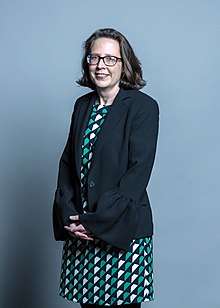
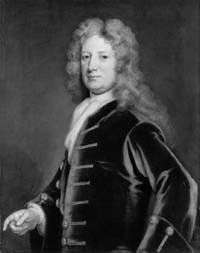
.svg.png)
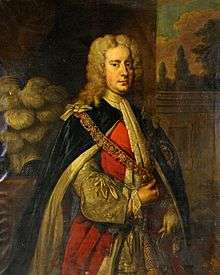
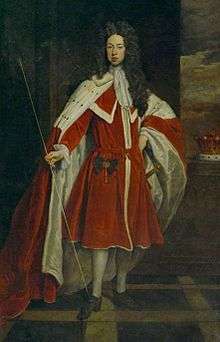
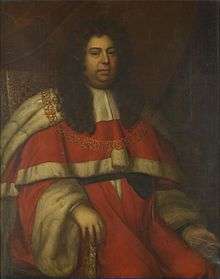









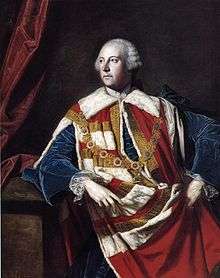
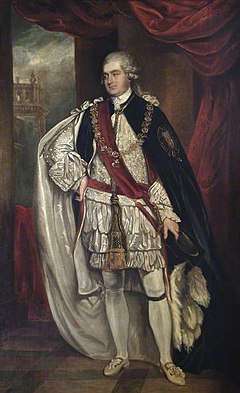
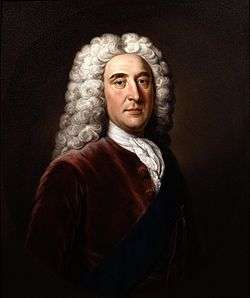



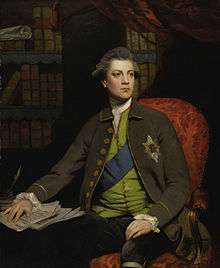



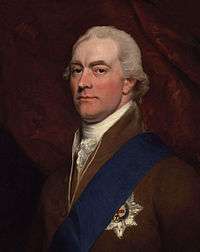
_after_George_Romney_of_John_Fane%2C_10th_Earl_of_Westmorland%2C_1796.jpg)
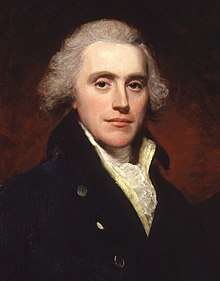
.jpg)
.svg.png)

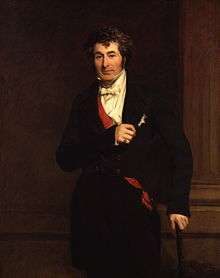

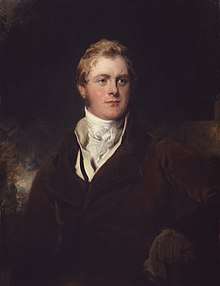
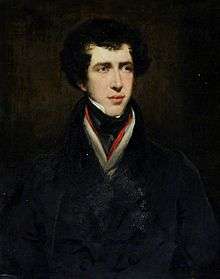

.svg.png)

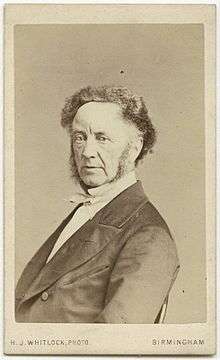


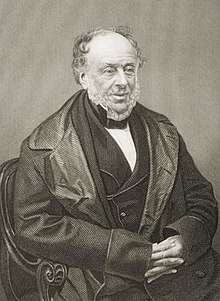

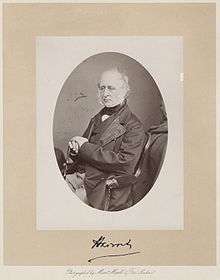


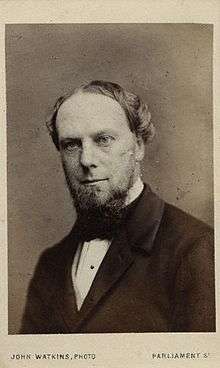
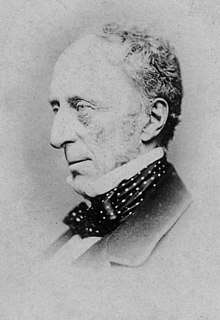



.jpg)
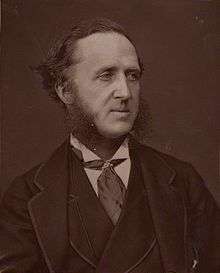
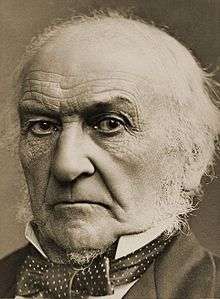


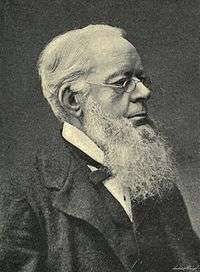
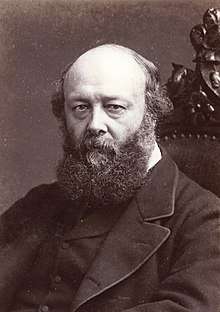


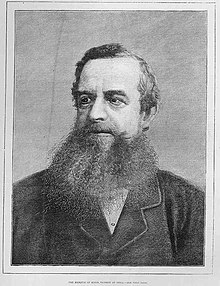

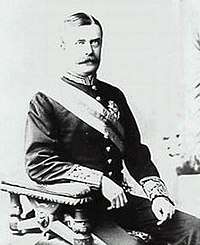




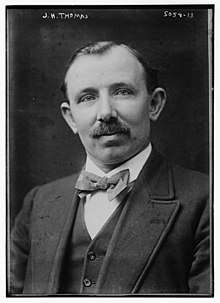



.jpg)
.jpg)
_Vane-Tempest-Stewart%2C_7th_Marquess_of_Londonderry.jpg)

